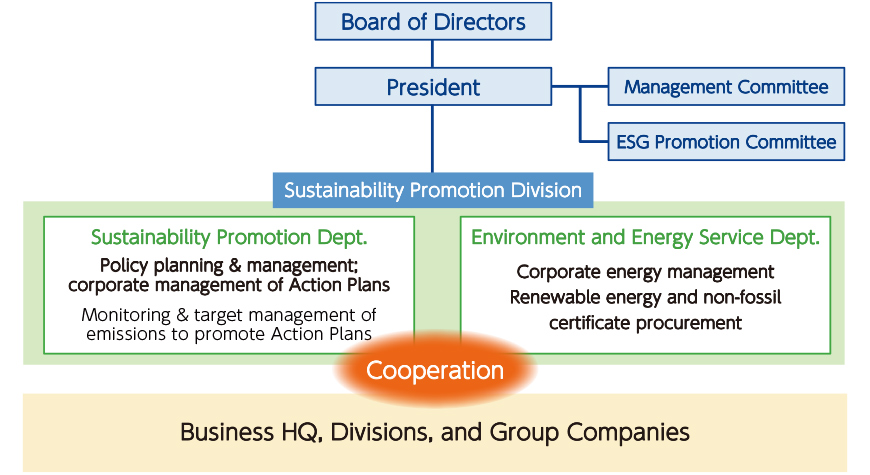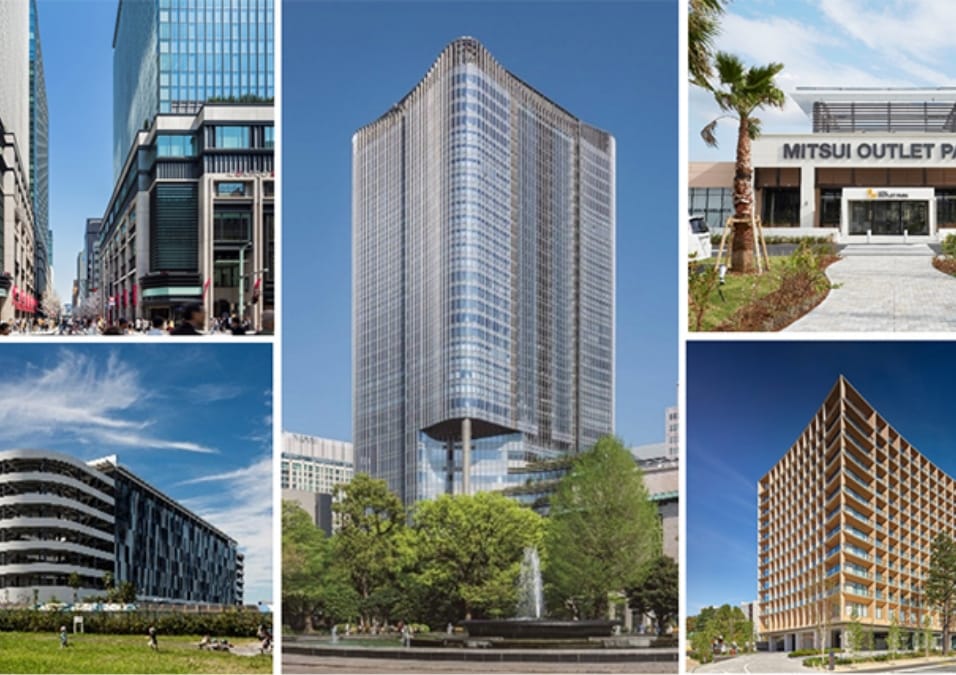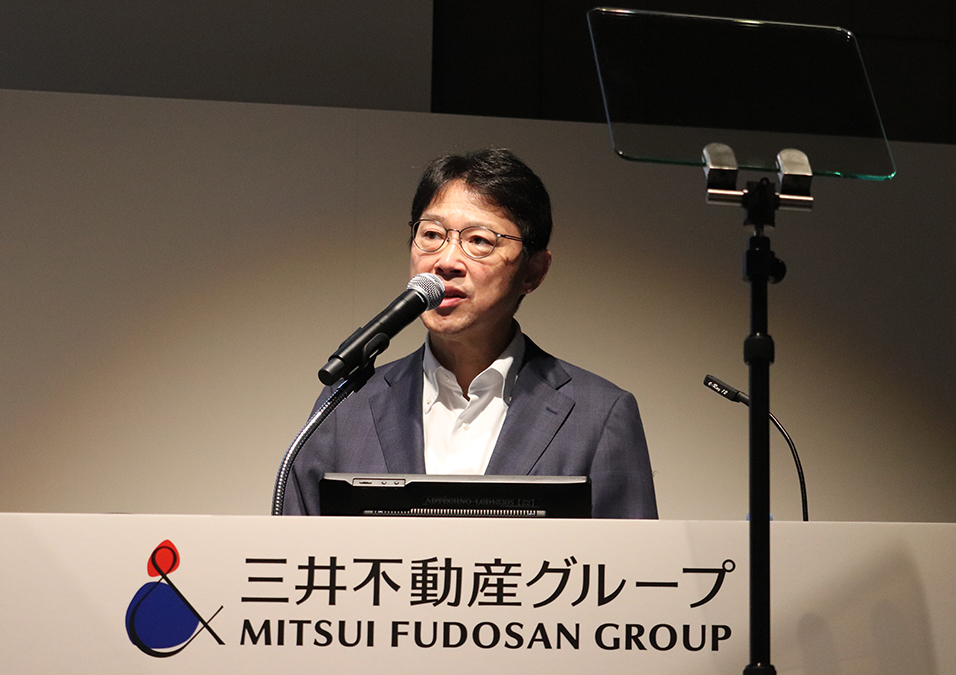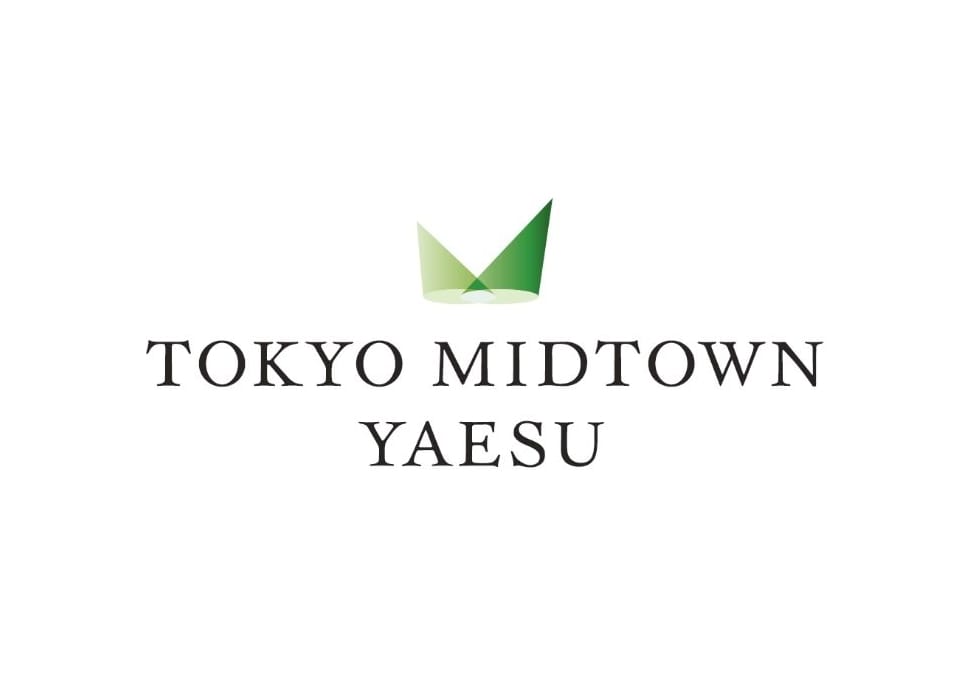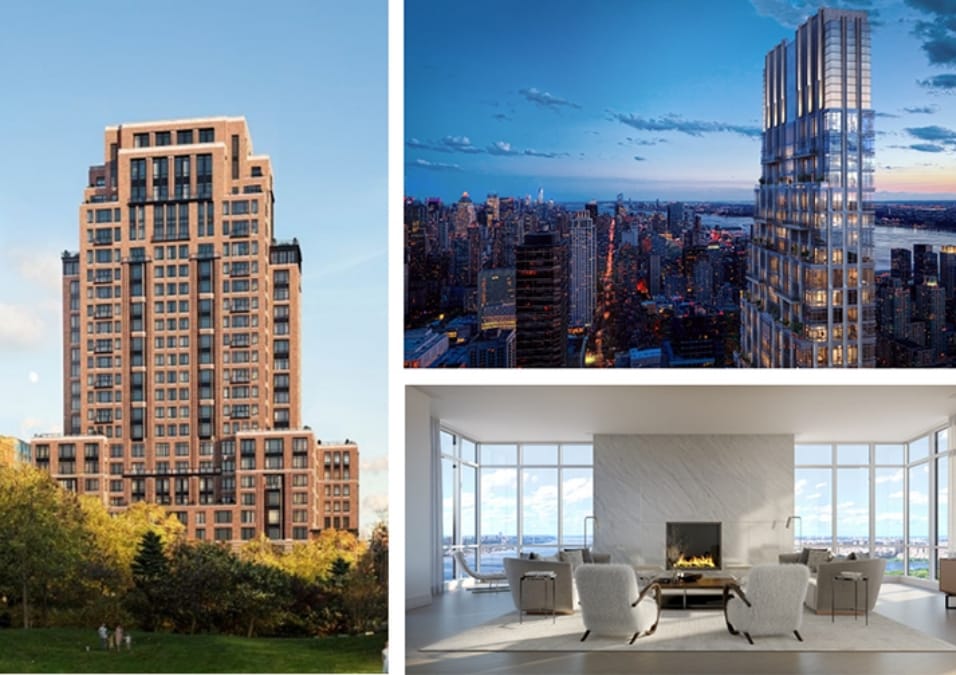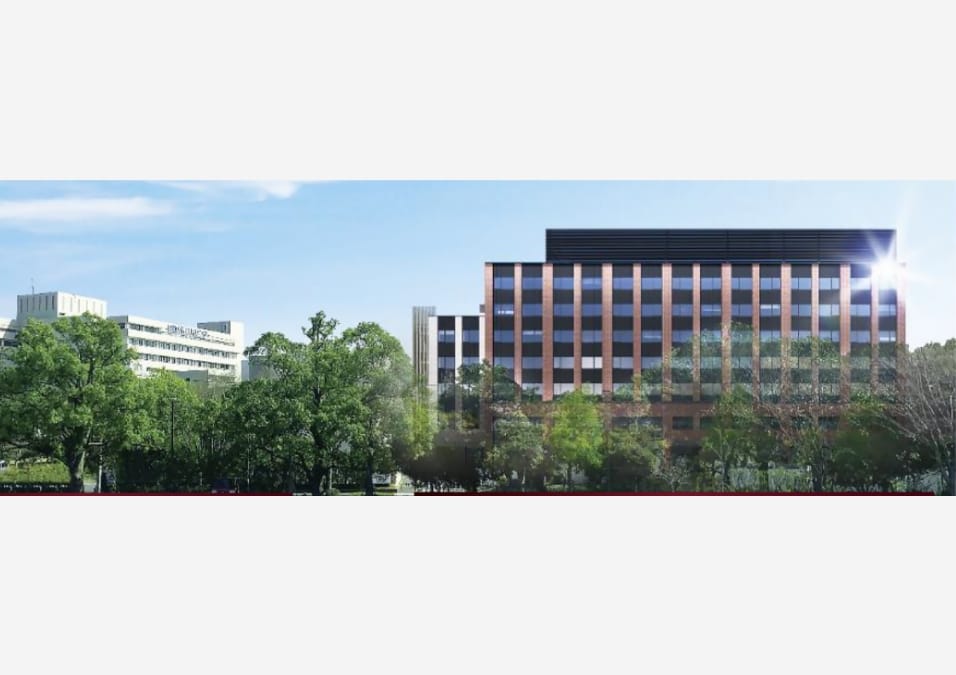FY2022 Initiatives to
Realize Decarbonized Society
Toward Realization of Decarbonized Society
In recent years, natural disasters have
become more severe and more common,
and climate change is occurring on a global scale.
The Paris Agreement, an international
framework for action against climate change,
has accelerated international movement,
and it has become increasingly important
for companies
to contribute to the sustainable
growth of society through their business.
Based on the meaning of "&",
our Group has achieved corporate growth
by enriching people's lives
and constantly creating new value through
the creation of neighborhoods
that meets the needs of the era by cooperating,
coexisting and co-creating with society.
We have also been proactively addressing
climate change for some time.
In December 2020, our Group's greenhouse gas
emission reduction targets for FY2030 and
FY2050 were announced.
In the following year 2021, we raised
the reduction target for FY2030 even higher,
and formulated Action Plans as comprehensive
and specific strategies to achieve the targets.
Action Plan
01
- ●
- Optimization of air conditioning load
- ●
- Optimization of standard lighting illuminance
- ●
- Adoption of other energy-saving items
one of the largest office buildings in Japan to have been certified ZEB Ready
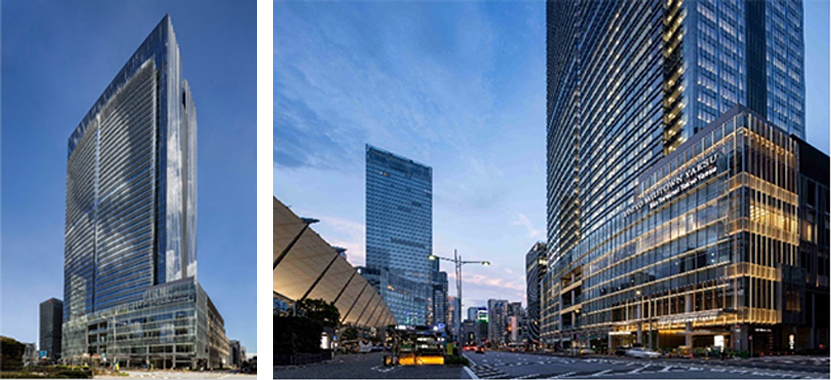
In addition to the introduction of LED lighting and motion sensors in common areas, in the private office areas LED lighting, daylight sensors, and high-efficiency outdoor units have been installed and lighting intensity settings have been optimized. These measures have reduced annual primary energy consumption by more than 50% compared to comparable conventional buildings. Solar panels have also been installed on part of the project site to generate the energy the building requires.
* The ZEB Ready certification applies to the office areas of Yaesu Central Tower
- ●
- Optimization of air conditioning load
- ●
- Improve lighting efficiency
- ●
- Adoption of other energy-saving items
- ●
- Installation of solar power generator
the first large-scale commercial facility to receive ZEB Oriented (Retail)
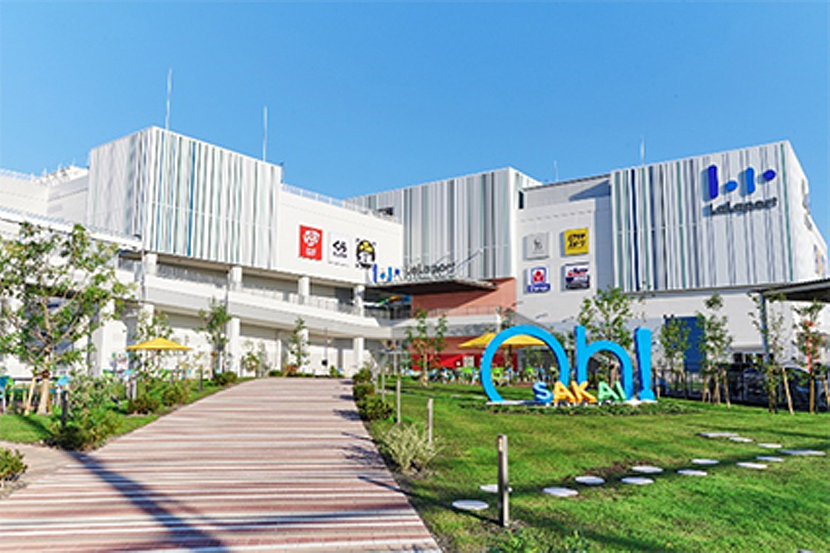
Reductions of more than 30% have been achieved for the facility's projected primary energy consumption. A Building and Energy Management System (BEMS) and lighting and air conditioning control systems were installed for efficient energy operation and management. Highly insulated building materials, high-efficiency equipment, and LED lighting enable energy-savings, while cogeneration systems allow energy to be produced and consumed on-site.
*ZEB Oriented certification covers areas of commercial facility buildings used for the sales of goods ("retail"), excluding areas used for food or drink establishments.
- ●
- Installation of solar power generator
- ●
- Considering the adoption of LED lighting in warehouses with dimming
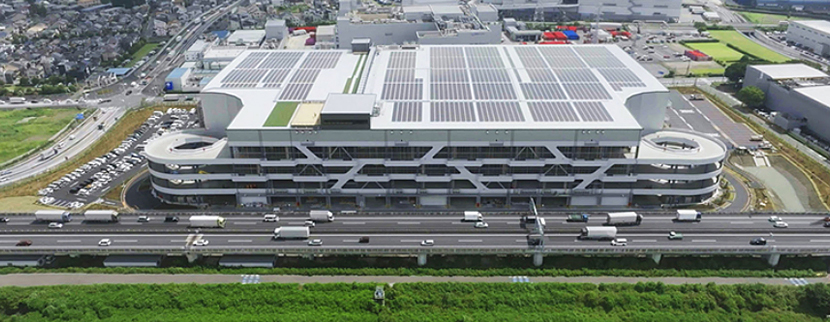
Through a variety of measures designed to generate energy and utilize it efficiently, CO2 reductions of 122.6% have been achieved compared to reference emission figures for the entire complex. In terms of energy efficiency, the facility features geothermal heat pumps, which use 44 posts (each with a diameter of around 15 cm) driven approximately 100 m underground to make use of the earth's heat, and can achieve energy savings of more than 30% compared to conventional air-cooled air-conditioning systems. Other energy-saving technologies that have been adopted include desiccant air conditioning (which allows for separate adjustment of humidity and temperature and uses around 20% less energy than conventional systems) and LED lighting. For energy generation, rooftop solar power generation equipment with a capacity of 2 MW (for annual generation of approximately 2.2 GWh), has been installed to supply power to both common areas and tenants' private areas.
- ●
- Optimization of air conditioning load
- ●
- Improve lighting efficiency
- ●
- Installation of solar power generator
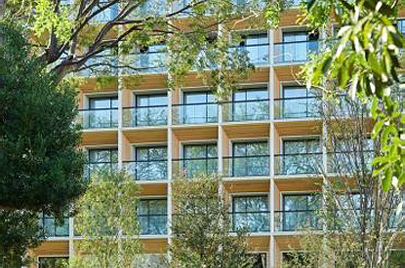
(Improve air conditioning efficiency by adopting balconies that block sunlight)
Achieve by FY2030:
ZEH-M in all mid- and high-rise units
ZEH in all detached units
(All units are ZEH-Oriented condominiums)
- ・
- Plans to acquire ZEH-Oriented certification for all 1,002 units, the largest scale in Japan
- ・
- Service is introduced that virtually eliminates CO2 emissions for both electricity and gas used.
- ・
- On-site power generation and MEMS further reduce the environmental impact of common areas
- ・
- Create a system that enables residents to enjoy and continuously work on energy conservation and CO2 reduction, such as by visualizing the amount of electricity consumed in each condominium.
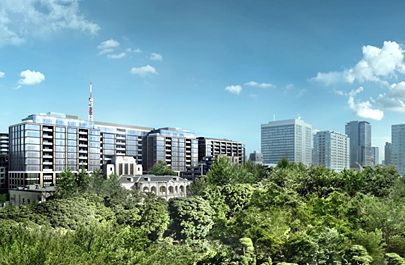

Achieve by FY2030 for orders received:
100% ZEH in exclusive housing 50% ZEH/ZEB in rental housing/business buildings
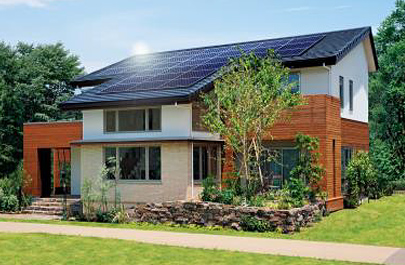
Proposal of environmental design including garden together with ZEH
actively promote the creation of on-site renewable energy.
In office buildings, promote the use of LED lighting and the optimization of lighting intensity in all properties, while making efforts to reduce the air conditioning load in hotels and commercial facilities.
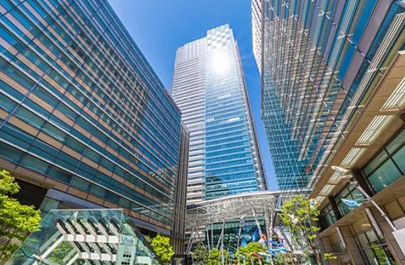
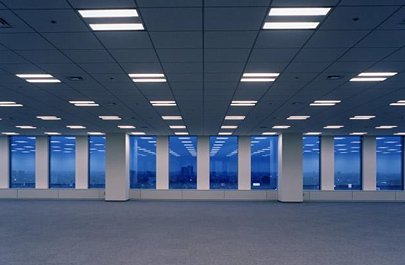
In logistics and commercial facilities, maximize the installation of solar power generators on rooftops and other premises.
Realize on-site power generation and supply.
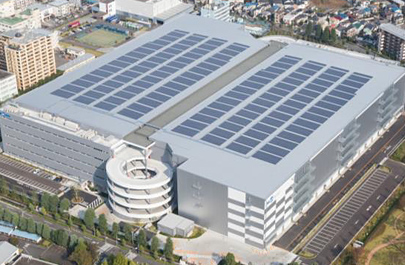
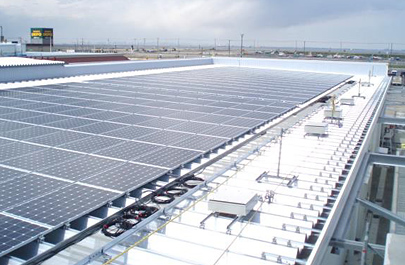
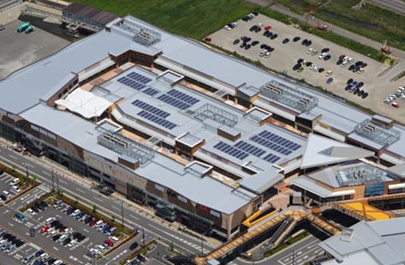
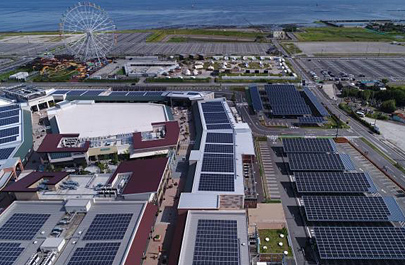
A Power Purchase Agreement (PPA) has been signed between Hiroshima International Airport Co., Ltd. and Mitsui Fudosan, under which we will install, own, and operate carport-mounted solar power generation equipment in the airport's car parks. The power generated will be used in Hiroshima Airport's terminal buildings.

Action Plan
02
and areas used by the Group nationwide*
- ●
- By FY2022, we completed the greening of power consumption used in 25 buildings in the Tokyo metropolitan area, including mixed-use core buildings in Tokyo Midtown and Nihonbashi area.
- ●
- In March 2022, we started collaborating on the greening of power consumption in the Chubu and Kansai regions. The Chubu and Kansai regions have been added to Mitsui Fudosan's "Green Electricity" expansion in the Tokyo metropolitan area, making it possible to expand into the three major metropolitan areas.
- ●
- This expansion will apply to approx. 180 facilities and we will accelerate the rollout of power greening to all facilities owned in Japan by FY2030.
- ●
- At Tokyo Midtown Yaesu, completed in 2023, we are adding environmental value to the electricity used in the facility through our five solar generation sites located around Japan-a first for us.
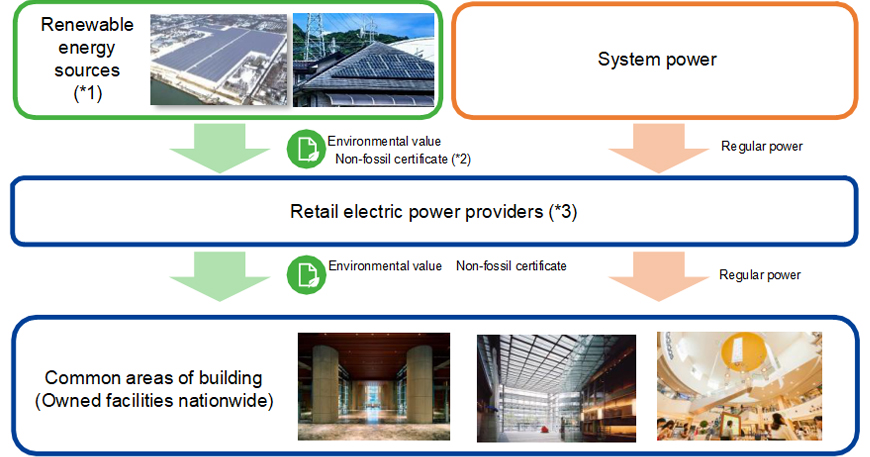
- *1:
- Solar power plants owned by Mitsui Fudosan, post-FIT power plants contracted by TEPCO Energy Partner,Incorporated, residential solar power generators, solar power owned by partner power producers, etc.
- *2:
- For FIT power sources, acquired via Japan Wholesale Power Exchange (JPEX); for non-FIT power sources, acquired from electric power providers.
- *3:
- Mitsui Fudosan TG Smart Energy Co., Ltd. in the specified electricity business areas; TEPCO Energy Partner,Incorporated and others in other areas.
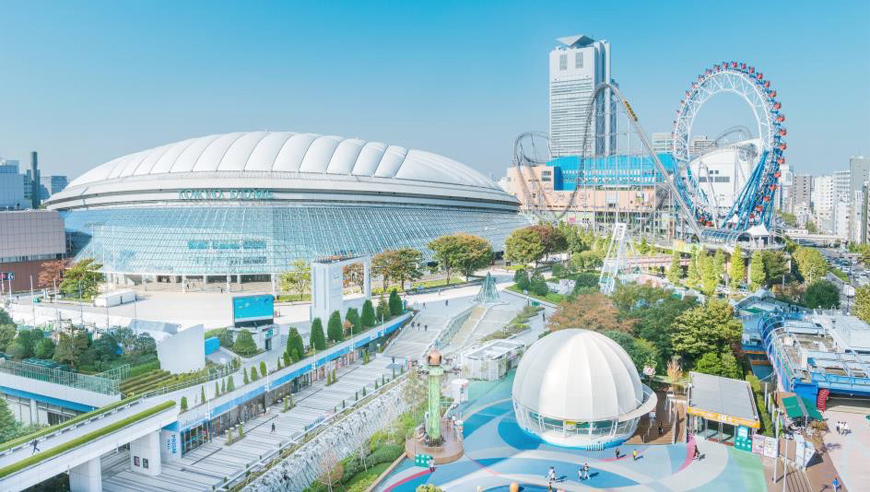
Action Plan
03

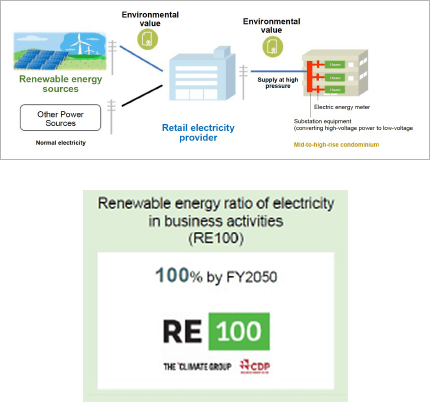
- ●
- Propose green power supply services to support corporate tenants' efforts toward RE100 and decarbonization.
- ●
- In April 2021, we started green power supply services for office building tenants.
- ●
- In 2022, through the completion of developments in the three major metropolitan areas, we have put in place a support framework to help customers resolve RE100 or ESG issues.
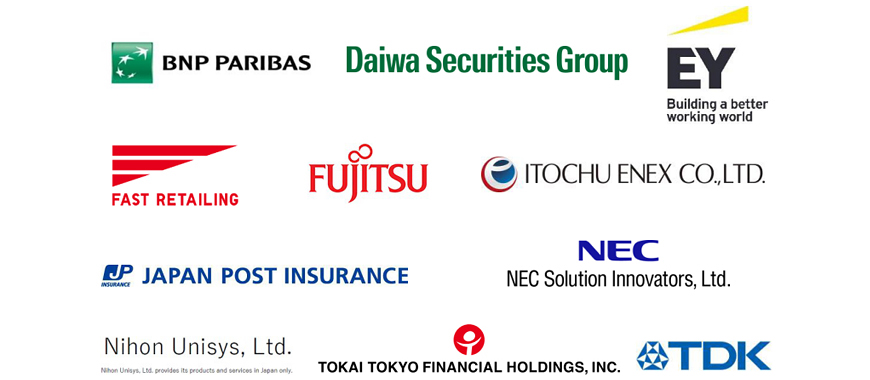
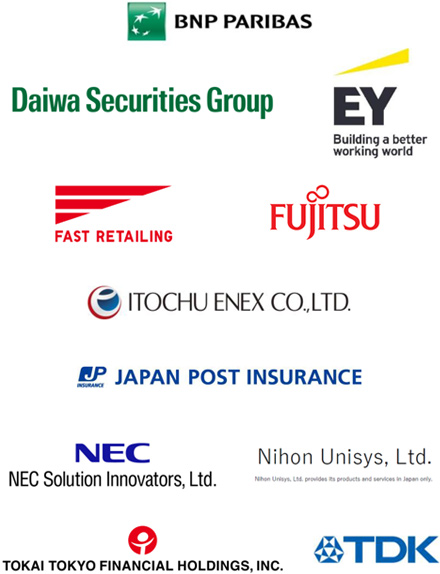
- ●
- Support institutional investors in their RE100 and decarbonization efforts by proposing a green power menu at the time of property sale.
- ●
- Achieve a 40% reduction in CO2 emissions (average for medium- and high-rise buildings and detached houses) by FY2030 by adopting methods such as the "bulk high- voltage power receiving × renewable energy" system and greening through the introduction of ENE-FARM in medium- and high-rise sales.
Action Plan
04
- ●
- In addition to the existing mega-solar project (80 million kWh/year), aim to develop mega-solar power plants with a total power generation capacity of 300 million kWh/year* (Total output: Approx. 175,000 kW) by FY2030. (Total: 380 million kWh/year)
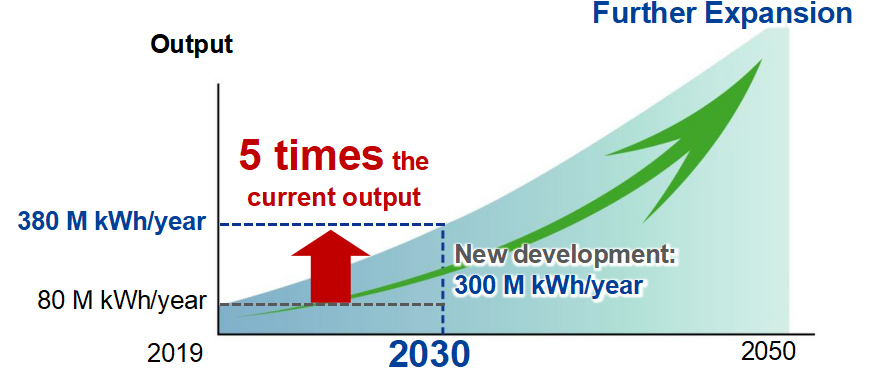
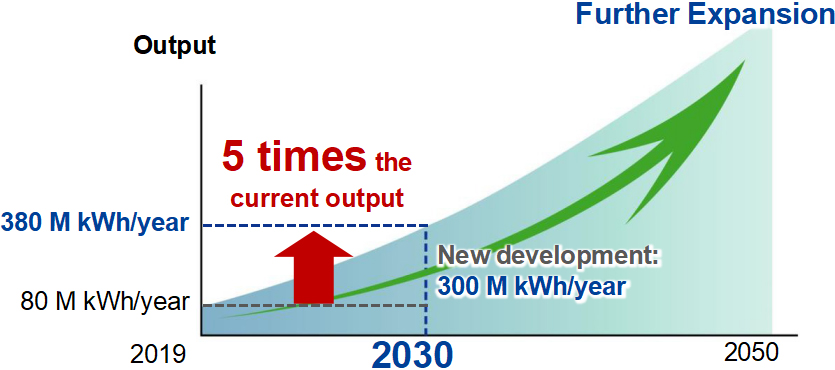
- ●
- In FY2022, a total of seven sites were developed for mega-solar to secure annual generation of approximately 23 GWh. This will also enable CO2 reductions of around 10,000 tonnes. These sites will send power to Tokyo Midtown Hibiya and to our facilities in the Hokkaido and Chugoku regions.
- ●
- Expand mega-solar projects with a total area of 93.9 ha at five locations nationwide. Total output: Approx. 72,000 kW, generating approx. 80 million kWh per year.
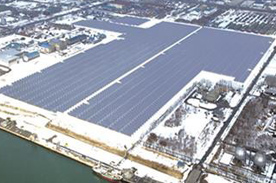
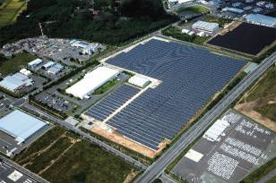
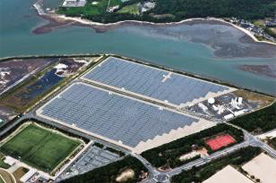
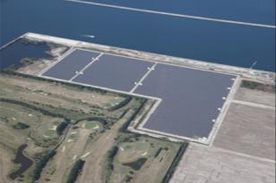
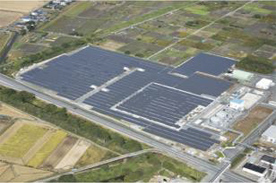
Action Plan
05
Promote reduction of CO2 emissions in the entire supply chain
- ●
- In March 2022, Mitsui Fudosan and Nikken Sekkei formulated the "Manual for Calculating Greenhouse Gas (GHG) Emissions," an arrangement of the Architectural Institute of Japan's "LCA Guidelines for Buildings*1" making its use easier in practical terms.
- ●
- Changing from the conventional simple method of multiplying the total construction cost by a certain unit price to the new method of accumulating each component and material , enables highly accurate calculation of GHG emissions.
- ●
- We will proceed with the trial of this manual, and widely share it with related parties such as academic societies, construction companies, and real estate companies. As a result, in 2023 the Real Estate Companies Association of Japan drew up its Construction GHG Emissions Calculation Manual.
- *1:
- LCA guidelines for buildings: Established in 2013 by the Architectural Institute of Japan (AIJ) and is the only academically established guideline in Japan for calculating the life cycle environmental impact (LCA*2) of buildings.
- *2:
- LCA (Life Cycle Assessment): A method for quantitatively assessing the environmental impact of a product or service over its life cycle.
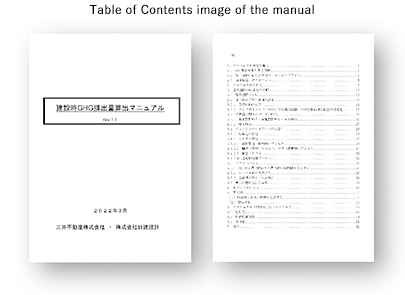
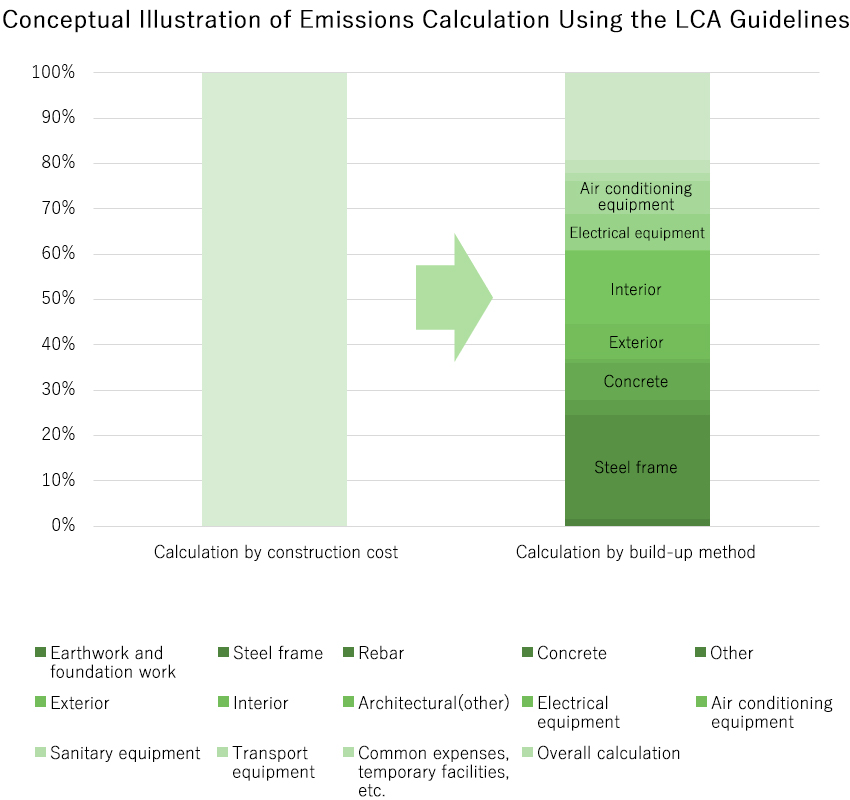
- ●
-
Revision of design guidelines
- ・
- Design to enhance environmental performance
- ・
- Proper planning on the use of components and equipment without waste
- ・
- Use of low-carbon materials and means
- ・
- Submission of "CO2 reduction plan during construction" including the above
- ●
-
Revision of estimate guidelines
- ・
- Calculation of emissions during construction using the tools on the left
- ・
- Reduction of emissions at construction sites
- ・
- Procurement strategy for materials
- ・
- Submission of "CO2 reduction plan during construction" including the above
- ●
- Actively utilize owned forests for high-rise wooden buildings and houses.
- ●
- Realize self-sufficiency in building materials and a sustainable virtuous cycle between forest resources and the local economy.
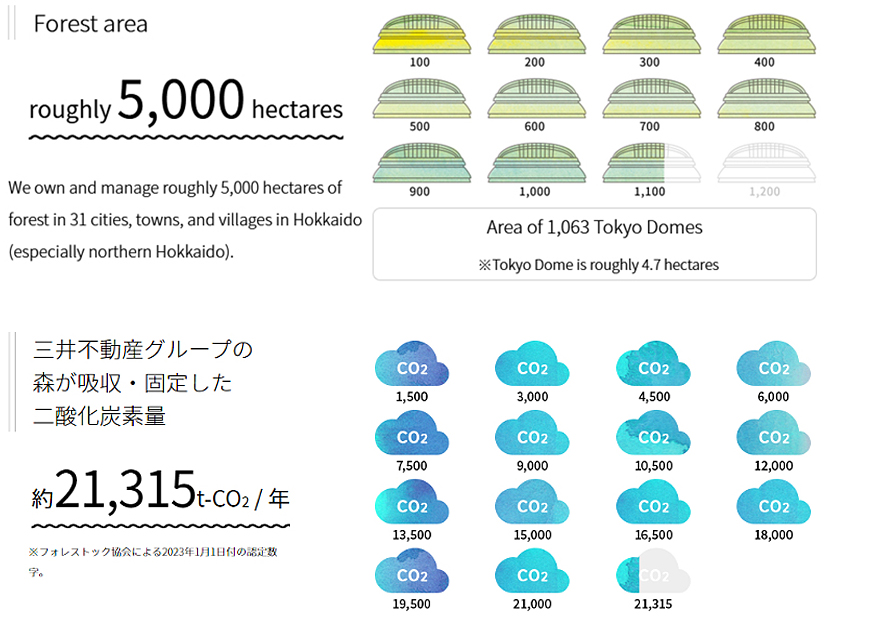
To promote the use of wood from trees grown in Hokkaido, we have signed an agreement with the prefectural government, the Hokkaido Federation of Forestry Cooperatives, and the Hokkaido Federation of Wood Industry Cooperative Associations.
Summary of the agreement:
- ・
- The Hokkaido Government will provide technical advice and information on subsidy projects and related programs with respect to promoting the use of timber from Hokkaido, as well as conduct public relations activities based on the agreement.
- ・
- The Hokkaido Federation of Forestry Cooperatives will establish a supply network for building materials in advance and will supply legally harvested wood in a timely manner.
- ・
- The Hokkaido Federation of Wood Industry Cooperative Associations will work to request fiscal support for promoting the use of local timber and developing related facilities.
- ・
- The Mitsui Fudosan Group will endeavor to use timber from Hokkaido in the buildings it plans to construct going forward.
Working closely with the Hokkaido Government, the Mitsui Fudosan Group will contribute to the realization of the agreement's core objectives, which are to realize a decarbonized society by 2050 and spur regional revitalization by energizing the forestry industry and its peripheral sectors.
- ●
- Wood, a sustainable building material is used to construct the condominiums significantly reducing CO2 emissions during construction and contributes to the global environment
- ●
- Sustainable condominiums with high thermal insulation, energy efficiency, durability, earthquake resistance, fire resistance and sound insulation
Park Axis Kita-Senzoku MOCXION
scheduled for ZEB-M Ready and LEED certification
A carbon-zero rental condominium building with an all-wood skeleton. The use of wood in this way reduces the amount of CO2 produced during construction by around half. As a project that utilizes pioneering wooden construction techniques, it was selected for commendation by the Ministry of Land, Infrastructure, Transport and Tourism in FY2022. Wood used in the finishing for the building's entrance lounge actually comes from the Mitsui Fudosan Group's own forests. This Mitsui Fudosan Residential rental condominium is scheduled to be the first to be certified under the LEED (Leadership in Energy and Environmental Design) international environmental certification system. Our MOCXION series of buildings make use of newly developed, high-strength load-bearing walls, which are highly resistant to earthquakes yet relatively slim.
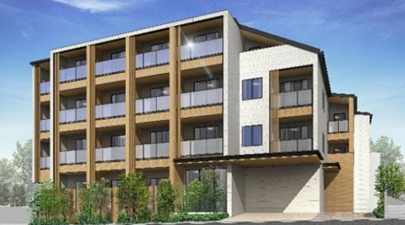
- ●
- The largest and tallest existing wooden high-rise building in Japan, with 17 floors above ground, a height of 70 m, and a total floor area of approx. 26,000 m2
- ●
- Lumber volume used for structural materials is expected to exceed 1,000 m3, the largest in Japan
- ●
- Actively utilize timber from forests owned by the Mitsui Fudosan Group in Hokkaido. The goal is to achieve self-sufficiency in building materials and a sustainable virtuous cycle between forest resources and the local economy.
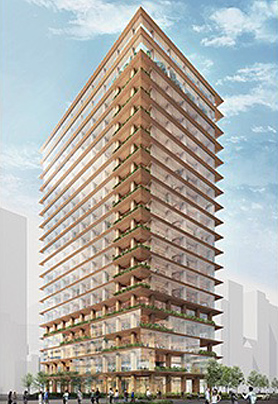
- ●
- In addition to improving the environmental performance of all facilities, we will actively acquire external certifications in Japan and overseas to promote ESG, including decarbonization. (Quantitative target: Acquire 100% certification for newly built environment efficiency.)
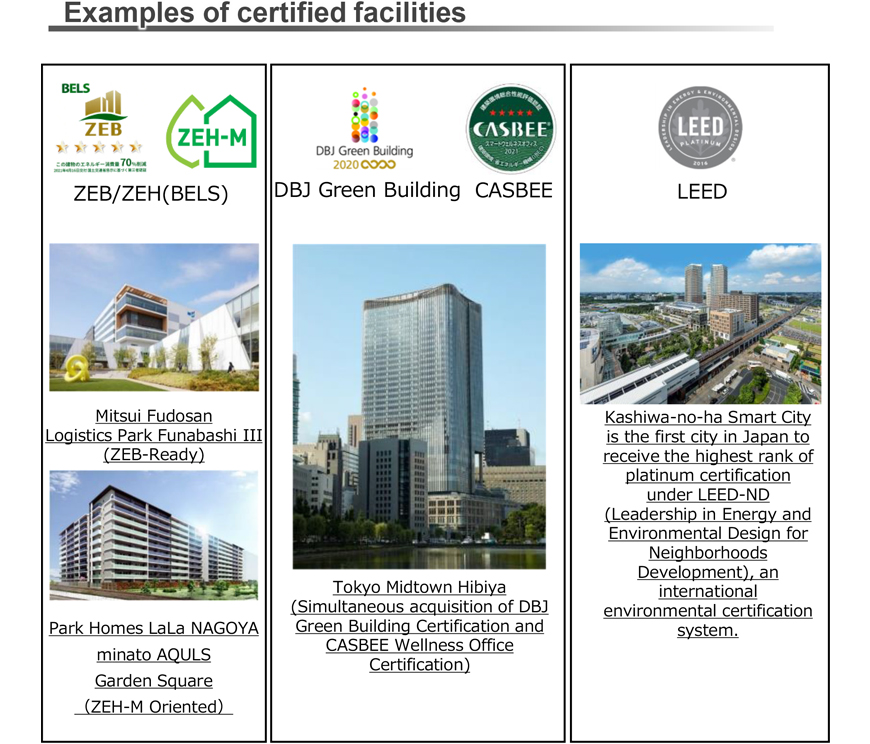
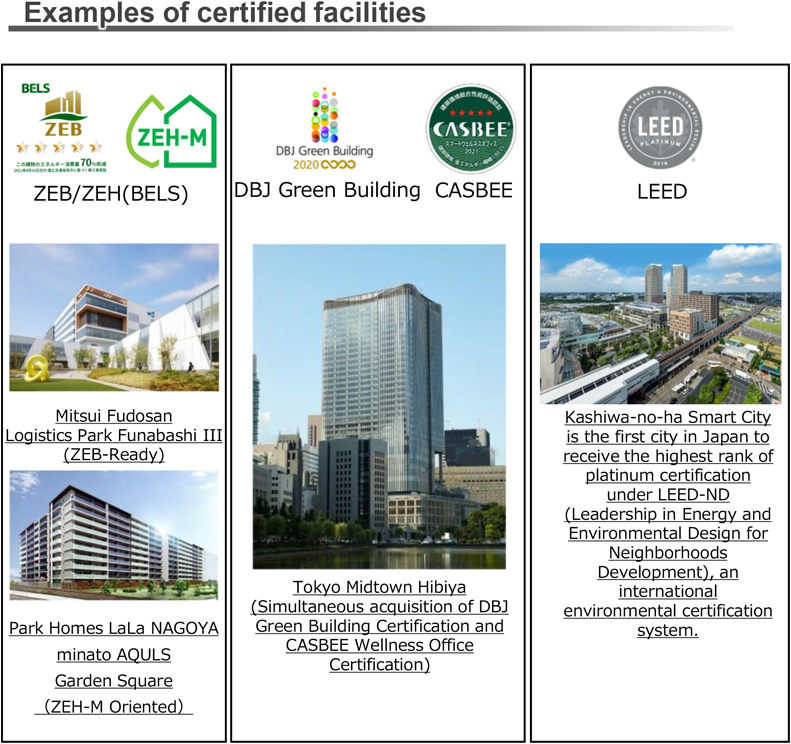
Refer to the ESG data page and environment-related data for the status of environmental real estate certifications.
https://www.mitsuifudosan.co.jp/english/esg_csr/esg_data/environment/
- ●
- Through proactive efforts-such as joint research between academia and construction companies, and investment in startups (including providing demonstration testing facilities)-we aim to help decarbonize society as a whole.
In 2022, we formulated a new strategic limited-partnership investment budget for venture capital funds that comprise startups with strengths in the decarbonization field, and invested in three such funds. Through strategic limited-partnership investments, we can grasp trends in technical innovations related to decarbonization, and discover-and co-create with-startups in those fields.


AEMS has been installed to centrally manage the energy of the entire area. Efficient use of energy has been achieved, and some energy savings have been achieved using solar panels.
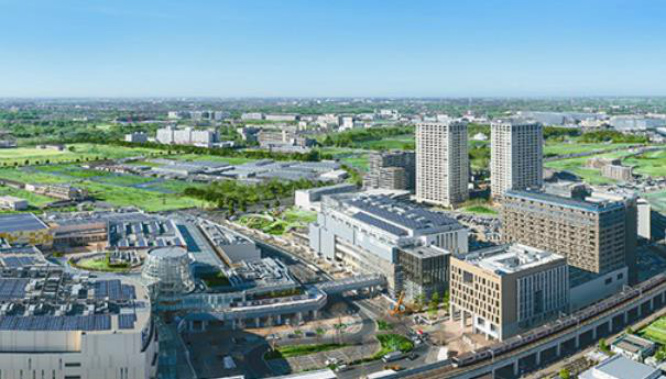
Demonstration fields for new technologies
Providing a demonstration field to venture companies with new decarbonization technologies, such as Girasol Energy Inc. and Exergy Power Systems Inc.
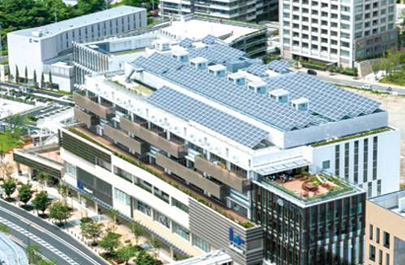
Environmental activities participated in by local residents
Develop a participatory environmental platform involving local residents and users in the area. Those who participate in the activities will be able to receive points and privileges.
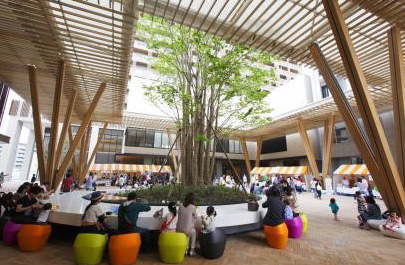
Through the stable supply of electricity and heat to the surrounding area, including existing buildings, we have realized eco-friendly neighborhoods development that improves energy resilience* and achieved energy conservation and CO2 reduction, even in times of emergency. Following Nihonbashi and Toyosu, energy supply started in Yaesu in September 2022.
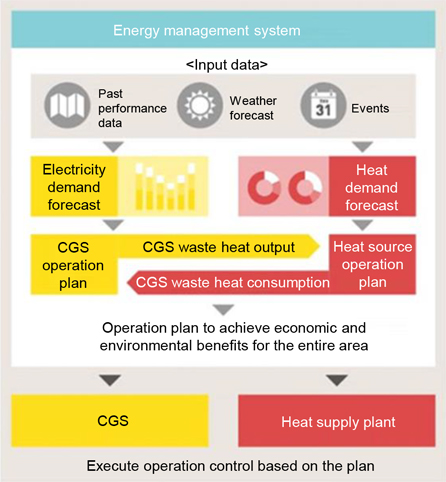
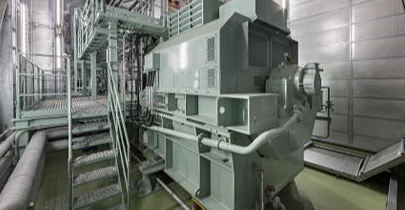
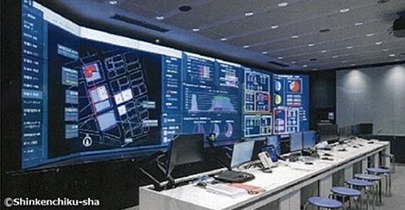
* Energy resilience: Enhance resilience of energy supply networks. This is based on the concept that it is important to be prepared not only for emergencies, but also for a variety of situations during normal times.
Mitsui Fudosan Residential runs a series of activities as part of the Sustainable Living Program ("Sus-katsu Program"), which promote enjoyable, sustainable decarbonization efforts. In 2023, one such activity involved starting a circular-action service to recycle unwanted goods through a permanent recycling station that aims to match clothes and other items no longer wanted by residents with new owners. Items are sorted and redistributed as a resource, which can help to reduce the amount of CO2 emissions produced by approximately 70% compared to incinerating them
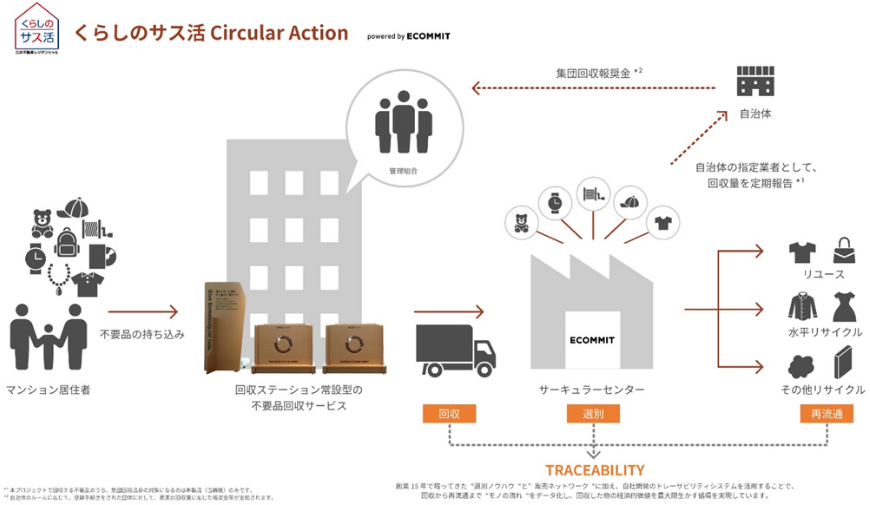
Unwanted item recycling/reuse flow
- ●
- From FY2022, we will introduce the Internal Carbon Pricing System, a mechanism to encourage decarbonization efforts by pricing CO2 emissions in newly developed properties. Environmental impact is quantified and visualized to manage progress. Raising awareness within the company to reduce CO2 emissions and accelerate efforts to decarbonize.
- ●
- Established the Sustainability Promotion Division in 2022 to accelerate efforts related to ESG and SDGs. The Sustainability Promotion Department was established in October 2021 with responsibility for overall functions related to ESG and SDGs, including promotion of action plans, and the Environment & Energy Business Department responsible for green energy management and mega solar business, will promote initiatives in cooperation with company-wide divisions.
